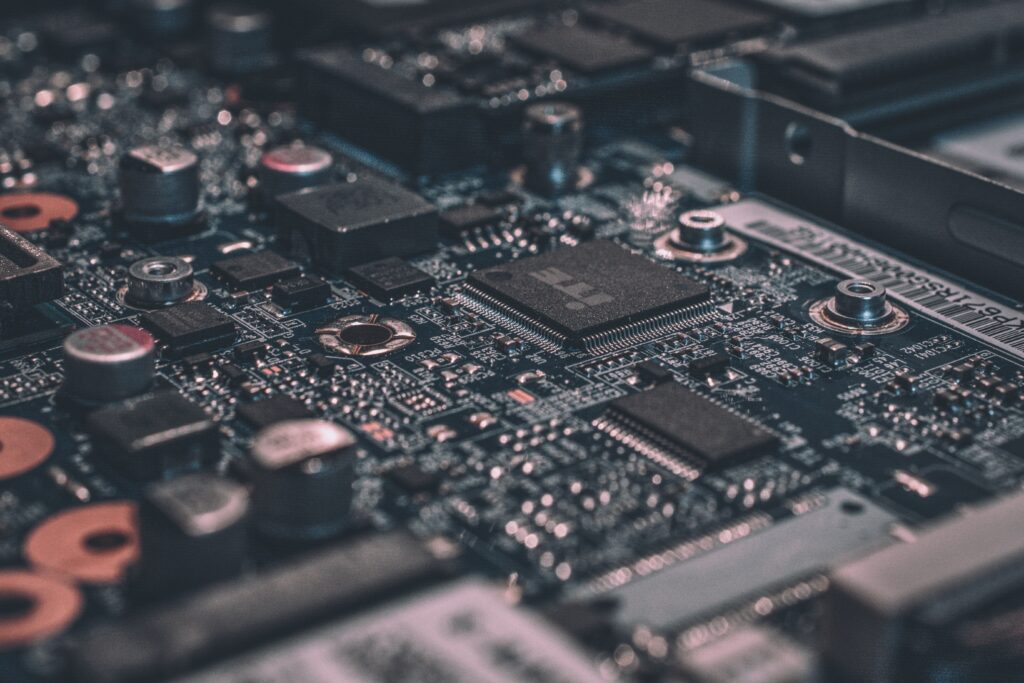Imagine being able to download a high-definition movie in just seconds, video chatting without any lag or buffering, and controlling your smart devices with lightning-fast speed. All of this and more is made possible by the latest innovation in mobile technology: 5G. In this article, we explore the incredible transformation that 5G brings to mobile gadgetry, revolutionizing the way we connect, communicate, and experience the world around us. Get ready to witness the power of 5G unfold before your eyes.
1. What is 5G?
1.1 Evolution of Mobile Networks
The evolution of mobile networks has been quite remarkable over the years. From the first generation (1G) that introduced basic voice communication, to the second generation (2G) that brought text messaging, and the third generation (3G) that introduced mobile data and internet access, each generation has built upon the previous one, bringing new possibilities and capabilities to our mobile devices.
1.2 Defining 5G
Now, we find ourselves on the cusp of the fifth generation (5G) of mobile networks. So, what exactly is 5G? In simple terms, 5G is the next leap in wireless technology that aims to revolutionize the way we connect, communicate, and interact with our mobile gadgets. It promises to deliver faster speeds, lower latency, and enhanced connectivity, opening up a world of possibilities for both personal and professional use.
1.3 Key Features of 5G
5G is not just about faster download speeds; it comes with a host of key features that make it truly transformative. One of the most notable features is its ability to support massive device connectivity. With 5G, you can have multiple devices connected simultaneously, without experiencing any significant drop in performance. This is a game-changer for the Internet of Things (IoT) and the concept of smart cities, where countless devices will be interconnected.
Another important feature of 5G is its improved network reliability. This means fewer dropped calls, stronger signals, and a more stable connection overall. Whether you’re in a crowded area or using your mobile device in a remote location, 5G aims to provide a consistent and reliable network experience.
2. The Benefits of 5G
2.1 Enhanced Speed and Lower Latency
One of the most anticipated benefits of 5G is its enhanced speed. With 5G networks, you can expect blazing-fast download and upload speeds that will drastically change how we consume and share content on our mobile devices. Whether you’re downloading large files, streaming high-definition videos, or playing online games, 5G will offer a significantly faster and smoother experience.
In addition to speed, 5G also promises lower latency, which refers to the time it takes for data to travel from one point to another. With lower latency, there will be virtually no lag or delay when using applications or services that require real-time interaction. This means faster response times for gaming, seamless video calls, and smoother browsing experiences.
2.2 Massive Device Connectivity
Another major benefit of 5G is its ability to support massive device connectivity. This means that you can connect numerous devices to a 5G network without sacrificing performance or speed. This is particularly crucial for the growth of the IoT, where everyday objects are becoming smarter and more connected. With 5G, the vision of a fully interconnected world where all devices are seamlessly communicating and exchanging data becomes a reality.
2.3 Improved Network Reliability
One of the frustrating aspects of current mobile networks is dropped calls, weak signals, and inconsistent connections. With 5G, you can expect a significant improvement in network reliability. Whether you’re in a densely populated city center or in a remote area with limited coverage, 5G aims to provide a more stable and reliable network experience. This means fewer dropped calls, stronger signals, and a smoother mobile connection overall.
2.4 Transformative User Experience
5G is set to transform the user experience in numerous ways. With faster download and upload speeds, streaming high-definition videos on your mobile device will be seamless and buffer-free. Online gaming will become more immersive and responsive, thanks to lower latency. Browsing the internet and accessing cloud-based services will be lightning-fast, maximizing productivity and efficiency. Overall, 5G promises to deliver a smoother, more seamless, and more enjoyable user experience across a wide range of applications and services.
2.5 Facilitating IoT and Smart Cities
The Internet of Things (IoT) is rapidly expanding, with everyday objects such as appliances, vehicles, and even clothing becoming interconnected. 5G plays a crucial role in facilitating the growth of the IoT by providing the necessary infrastructure to support the massive number of interconnected devices. With 5G, smart cities can become a reality, where everything from transportation to public utilities is seamlessly connected and intelligently managed. This opens up a world of possibilities in terms of efficiency, sustainability, and quality of life.

3. The Impact on Mobile Gadgetry
3.1 Faster Download and Upload Speeds
One of the most tangible benefits of 5G for mobile gadgetry is the faster download and upload speeds. With 5G, downloading large files, such as high-definition movies or complex applications, will be a matter of seconds rather than minutes. Similarly, uploading content, such as videos or high-resolution photos, to social media platforms or cloud storage will be much quicker. This allows you to make the most of your mobile devices without being constrained by slow data transfer speeds.
3.2 Seamless Streaming and Gaming
Streaming high-definition videos and playing online games on your mobile device will be a seamless experience with 5G. Thanks to its enhanced speed and lower latency, you can enjoy buffer-free streaming, crystal-clear video quality, and multiplayer gaming without any noticeable lag. This opens up new possibilities for entertainment on the go, whether you’re watching your favorite TV shows, live sports events, or engaging in multiplayer battles with gamers from around the world.
3.3 Real-Time AR and VR Experiences
Augmented Reality (AR) and Virtual Reality (VR) have become increasingly popular in recent years, offering immersive and interactive experiences. 5G takes AR and VR to the next level by providing the necessary speed and low latency for real-time experiences. Whether you’re exploring virtual worlds, attending live events through VR, or using AR applications for navigation and information, 5G ensures a seamless and responsive experience. This opens up endless possibilities for gaming, education, healthcare, and various other industries.
3.4 Cloud Storage and Computing
Cloud storage has become an integral part of our digital lives, allowing us to store and access our files, photos, and videos from any device with an internet connection. With 5G, accessing and syncing cloud-stored data will be faster and more efficient. Whether you’re accessing important documents for work, retrieving family photos, or streaming videos from your cloud storage, 5G ensures a smooth and lag-free experience.
In addition to cloud storage, 5G also enables cloud computing. This means that resource-intensive tasks, such as complex calculations, rendering, and AI processing, can be offloaded to powerful cloud servers, freeing up the resources of your mobile device. This opens up new possibilities for advanced applications and services that require significant computational power.
3.5 Cutting-Edge Mobile Applications
The increased speed, lower latency, and enhanced connectivity of 5G pave the way for cutting-edge mobile applications that were previously not feasible. From advanced augmented reality applications to real-time translation services, from high-fidelity video editing to sophisticated virtual assistants, 5G enables a new generation of mobile applications that leverage its capabilities to deliver transformative experiences.
4. Overcoming Challenges
4.1 Infrastructure and Network Coverage
One of the main challenges of implementing 5G is the need for extensive infrastructure upgrades. 5G requires a dense network of small cells and base stations to provide the necessary coverage and capacity. This poses logistical challenges, as the deployment of these small cells requires careful planning and coordination with local authorities. Additionally, ensuring comprehensive network coverage, especially in rural and remote areas, remains a challenge that needs to be addressed for widespread adoption of 5G.
4.2 Device Compatibility
To take full advantage of 5G, you need a compatible device that supports the technology. While many new smartphones and other mobile devices are being released with 5G capabilities, the transition to 5G-compatible devices will take time. This means that some users may not be able to immediately benefit from the advantages of 5G until they upgrade their devices. However, as 5G becomes more widespread, device compatibility will become less of an issue.
4.3 Security and Privacy Concerns
As with any new technology, 5G brings about security and privacy concerns. With the increased connectivity and data exchange facilitated by 5G, the potential for malicious attacks and unauthorized access also increases. It is crucial for network operators and device manufacturers to prioritize security measures to ensure that user data remains protected and that the integrity of the network is maintained. Additionally, privacy regulations and compliance frameworks need to be in place to address the collection and usage of personal data in the 5G era.

5. The Role of 5G in Future Technologies
5.1 Autonomous Vehicles
Autonomous vehicles, often referred to as self-driving cars, hold tremendous potential for improving road safety, reducing traffic congestion, and enhancing transportation efficiency. However, their successful development and widespread adoption rely heavily on robust and ultra-reliable communication networks, such as 5G. 5G’s low latency and high reliability make it ideal for enabling real-time communication between autonomous vehicles, infrastructure, and other connected devices, ultimately leading to safer and more efficient transportation systems.
5.2 Smart Homes and IoT Devices
The concept of smart homes, where everyday household appliances and devices are connected to the internet and can communicate with each other, depends heavily on a fast and reliable network. 5G’s ability to handle massive device connectivity and provide a stable connection makes it a key enabler of the smart home revolution. With 5G, you can control and automate various aspects of your home, such as lighting, heating, security systems, and entertainment, all from your mobile device.
Additionally, 5G plays a crucial role in enabling the growth of the Internet of Things (IoT) by providing the necessary infrastructure for billions of interconnected devices to communicate and exchange data. From wearables to industrial sensors, from smart appliances to environmental monitoring systems, the IoT relies on 5G to create a truly interconnected and intelligent world.
5.3 Industry 4.0 and Automation
Industry 4.0, also known as the fourth industrial revolution, is characterized by the integration of advanced technologies and automation into industrial processes. This includes technologies such as robotics, artificial intelligence, big data analytics, and the IoT. 5G plays a pivotal role in Industry 4.0 by providing the necessary connectivity and infrastructure to enable real-time communication between machines, sensors, and control systems.
With 5G, factories and industrial facilities can become more efficient, productive, and agile. Machines can communicate with each other to optimize production processes, predictive maintenance can minimize downtime, and real-time data analytics can enable smarter decision-making. The high-speed, low-latency, and reliable connection offered by 5G are essential for the widespread adoption of automation and Industry 4.0 technologies.
5.4 Telemedicine and Remote Healthcare
Telemedicine, or the remote delivery of healthcare services using technology, has gained significant traction in recent years, especially due to the COVID-19 pandemic. 5G can greatly enhance the capabilities of telemedicine by enabling real-time video consultations, remote patient monitoring, and high-resolution medical imaging, all with minimal latency and high reliability.
With 5G, patients can have access to specialist healthcare services regardless of their location, healthcare professionals can collaborate and share information seamlessly, and remote patient monitoring can provide timely and accurate data for diagnosis and treatment. This not only improves healthcare accessibility but also reduces the strain on healthcare systems, making quality healthcare more efficient and cost-effective.
5.5 Remote Work and Virtual Collaboration
The COVID-19 pandemic has accelerated the adoption of remote work and virtual collaboration tools. 5G takes remote work and virtual collaboration to the next level by providing the necessary connectivity and reliability for seamless remote communication and collaboration.
With 5G, remote workers can have real-time video meetings without any lag or buffering, access cloud-based applications and files effortlessly, and collaborate on projects with colleagues across the globe as if they were in the same room. This opens up new possibilities for flexible work arrangements, global teamwork, and efficient virtual collaboration, ultimately transforming the way we work and interact in a digital world.
6. Global Adoption and Implementation
6.1 Progress in Different Regions
The adoption and implementation of 5G vary across different regions of the world. Some countries, particularly in East Asia, have made significant progress in deploying 5G networks and infrastructure. Countries like South Korea, China, and Japan have been at the forefront of 5G development, with extensive network coverage and strong investments in research and development.
In Europe, several countries have also made significant strides in 5G deployment, with major cities offering 5G coverage and trials taking place in various industries. North America, particularly the United States, has seen a mix of advancements in 5G deployment, with some areas having widespread coverage while others are still in the early stages.
In other regions, such as Africa and parts of Latin America, 5G is in the early stages of development, primarily due to factors such as limited infrastructure, regulatory challenges, and affordability concerns. However, efforts are being made to bridge the digital divide and bring the transformative power of 5G to these regions as well.
6.2 Key Players in 5G Rollout
The rollout of 5G networks involves collaboration and coordination between various stakeholders, including telecommunications companies, network equipment manufacturers, device manufacturers, and government entities. Some of the key players in the 5G rollout include major telecommunications companies such as Huawei, Ericsson, Nokia, and Samsung. These companies provide the necessary infrastructure, including base stations, small cells, and network equipment, to enable 5G connectivity.
Device manufacturers, including Apple, Samsung, and Huawei, have also played a crucial role in the adoption of 5G by releasing compatible devices that support the new technology. Government entities and regulatory bodies also play a significant role in the rollout of 5G by providing the necessary policies, licenses, and regulations to support the deployment and operation of 5G networks.
6.3 Challenges in Global Implementation
While progress has been made in the global implementation of 5G, several challenges remain. One of the main challenges is the need for extensive infrastructure upgrades, as mentioned earlier. Ensuring comprehensive network coverage, especially in rural and remote areas, is crucial for bridging the digital divide and providing equal access to 5G connectivity.
Another challenge is the cost of implementing 5G networks. The deployment of 5G infrastructure requires significant investments in terms of equipment, spectrum licenses, and network rollout. This can pose a financial burden for network operators, especially in developing regions where affordability is a key concern. Governments and industry stakeholders need to work together to address these challenges and create an enabling environment for the global implementation of 5G.

7. Future Developments and Innovations
7.1 Extended Spectrum and Speed
The future of 5G is expected to bring even faster speeds and extended spectrum availability. As technology advances and more efficient network architectures are developed, 5G networks will be able to leverage higher frequency bands, such as millimeter-wave (mmWave), to deliver unprecedented speeds and capacity. This means that download and upload speeds will continue to increase, allowing for more data-intensive applications and services.
7.2 Cloud-Native Network Architecture
Cloud-native network architecture is another area of future development for 5G. With cloud-native architecture, network functions and services are virtualized and run on cloud infrastructure, allowing for greater flexibility, scalability, and efficiency. This enables network operators to deploy and manage 5G networks more efficiently, reducing costs and enabling rapid service deployment and innovation.
7.3 Edge Computing and Edge Services
Edge computing is a concept that brings computing and data storage closer to the edge of the network, closer to the devices and users. This reduces latency and improves real-time processing capabilities, making it ideal for applications that require immediate response times, such as autonomous vehicles, industrial automation, and smart city infrastructure. 5G plays a crucial role in enabling edge computing by providing the necessary connectivity and speed to process data at the edge of the network.
7.4 Network Slicing for Customized Services
Network slicing is a concept that allows network operators to provide virtualized and isolated network slices tailored to specific requirements. This means that different types of services and applications can coexist on the same physical network infrastructure while being isolated and optimized for their specific needs. With network slicing, network operators can offer customized services and better manage the quality of service for different applications and users, ensuring a consistent and reliable experience.
7.5 Integration with AI and Machine Learning
Artificial Intelligence (AI) and Machine Learning (ML) are increasingly being integrated into various aspects of our lives, including mobile services and applications. 5G will further facilitate the integration of AI and ML by providing the necessary connectivity and processing power for real-time AI applications. From AI-powered virtual assistants to intelligent video analytics, 5G opens up new possibilities for advanced AI and ML applications on mobile devices.
8. Potential Roadblocks and Limitations
8.1 Regulatory and Policy Constraints
One of the potential roadblocks to the widespread implementation of 5G is regulatory and policy constraints. The deployment of 5G networks requires the allocation and management of radio frequency spectrum, which is governed by regulatory bodies. Delays in spectrum allocation or conflicting regulations can hinder the timely rollout of 5G networks.
Additionally, privacy regulations and compliance frameworks need to be in place to address the collection, usage, and protection of personal data in the 5G era. Ensuring that privacy rights are upheld and that user data remains secure is crucial for the successful adoption of 5G.
8.2 High Costs and Investments
The implementation of 5G networks involves significant costs and investments. Network operators need to invest in infrastructure upgrades, including base stations, small cells, and network equipment. Spectrum licenses can also be expensive, especially in spectrum auctions. These costs can pose financial challenges, particularly for smaller network operators or operators in developing regions. Adequate funding mechanisms and public-private partnerships can help address these challenges and ensure the widespread adoption of 5G.
8.3 Environmental Impact
The implementation of 5G networks can have environmental impacts, particularly in terms of energy consumption and electronic waste. The increased number of base stations and small cells required for 5G networks can lead to higher energy consumption. Efforts need to be made to ensure that 5G networks are energy-efficient and that renewable energy sources are utilized where possible.
Additionally, the rapid pace of technological advancement and the replacement of older devices with 5G-compatible ones can contribute to electronic waste. Proper disposal and recycling mechanisms need to be in place to minimize the environmental impact of 5G deployment and ensure sustainable practices.
9. Addressing Privacy and Security Concerns
9.1 Encryption and Authentication
Encryption and authentication mechanisms are crucial for protecting user data and ensuring the security of 5G networks. End-to-end encryption ensures that data exchanged between devices and networks remains secure and confidential. Robust authentication protocols verify the identity of devices and users, preventing unauthorized access. Network operators and device manufacturers need to implement strong encryption and authentication measures to mitigate security risks in the 5G ecosystem.
9.2 Network Traffic Monitoring
Network traffic monitoring is essential for detecting and responding to security threats in real-time. Continuous monitoring of network traffic allows network operators to identify and block malicious activities, such as Distributed Denial of Service (DDoS) attacks or unauthorized access attempts. By closely monitoring network traffic, operators can ensure the integrity and security of 5G networks, minimizing the risk of cyberattacks and unauthorized activities.
9.3 Privacy Regulations and Compliance
Privacy regulations and compliance frameworks play a crucial role in addressing privacy concerns in the 5G era. Governments and regulatory bodies need to enact legislation that safeguards user privacy, controls the collection and usage of personal data, and ensures transparent data practices. Compliance frameworks can help organizations adhere to privacy regulations and foster a privacy-centric approach to the deployment and operation of 5G networks.
10. Conclusion
5G is set to revolutionize mobile gadgetry in countless ways, bringing faster speeds, lower latency, and enhanced connectivity to our mobile devices. With its transformative features, 5G will enable new technologies, applications, and services that were previously not feasible. However, challenges such as infrastructure deployment, device compatibility, security, and environmental impact need to be addressed for the widespread adoption and implementation of 5G. As we move forward, it is crucial for stakeholders to collaborate and work towards a future where 5G can unlock the full potential of our mobile gadgets and shape a truly connected world.


